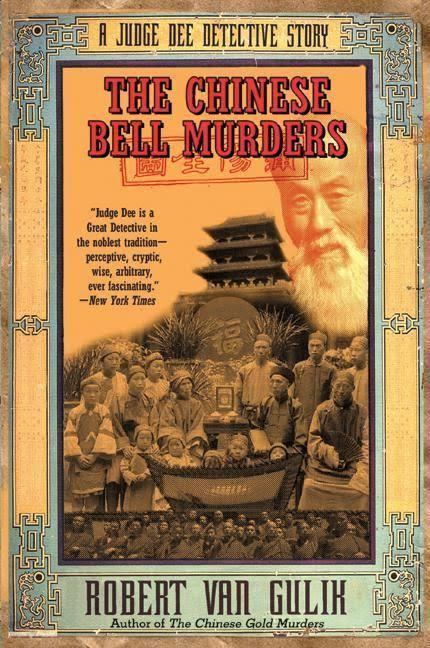8 /10 1 Votes8
4/5 AbeBooks Publication date 1958 Originally published 1958 Preceded by The Chinese Gold Murders | 4/5 Goodreads Media type Print | |||||||||||||||||||||||||||||||||
 | ||||||||||||||||||||||||||||||||||
Similar Works by Robert van Gulik, Judge Dee mystery books, Gong'an fiction books | ||||||||||||||||||||||||||||||||||
The Chinese Bell Murders is a gong'an historical mystery novel written by Robert van Gulik and set in Imperial China (roughly speaking the Tang Dynasty). It is a fiction based on the real character of Judge Dee (Ti Jen-chieh or Di Renjie), a magistrate and statesman of the Tang court, who lived roughly 630–700.
Contents
This book was originally written by Robert van Gulik sometime between 1953 and 1956. Like its predecessor, The Chinese Maze Murders it was intended for a Japanese or Chinese audience but he later chose to publish it in English. As it happened, all three editions came out at roughly the same time.
Plot introduction
Judge Dee is a newly appointed magistrate to the town of Poo-yang. He has one case left over from the previous judge, a brutal rape-murder of a woman called Pure Jade. She was the daughter of a local butcher named Hsai who lived on Half Moon Street. The girl's lover stands accused but Judge Dee senses something in the case is not right so he sets out, with his aides, to find the real murderer. He also has to wrestle with the problem of Buddhist Temple of Boundless Mercy, run by the abbot called "Spiritual Virtue". Rumor has it that the monks, who can cure barren women, are not as virtuous as they seem.
Poo-yang was the setting for many Judge Dee stories including: The Emperor's Pearl, Necklace and Calabash, Poets and Murder, and The Red Pavilion.
Literary significance and criticism
"... enjoyable by anyone who knows what to look for in the depiction of Chinese manners and topography, and who does not look for what the species can't provide."
